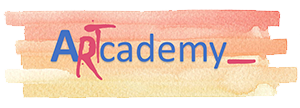

Easter eggs – handmade painting technique
In Bucovina region practiced egg painting is a tradition inherited from ancestors.
First the eggs are boiled and when are warm, they are painted with beeswax.
The wax is kept in low heat, preferably in a tin container to keep the wax liquid.
It follows the painting (incondeierea) of the eggs with traditional Romanian motifs.
Easter egg painting is an ancient tradition with pre-Christian origin.
Painted eggs symbolize the arrival of spring and the rebirth of nature.
In the Romanian folk tradition, Easter eggs are considered a symbol of regeneration and purification.
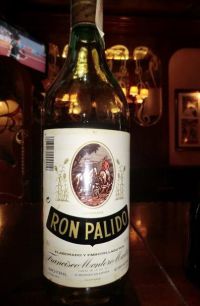
Harvest and grinding of the sugarcane technique - Motril's Ron
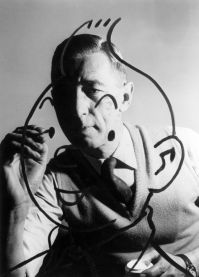
Hergé Drawing Tintin
A cartoon is a type of illustration, possibly animated, typically in a non-realistic or semi-realistic style.
The video shows the famous Belgian cartoonist Hergé, drawing his most known character: Tintin. The cartoon has become famous all over the world for its adventures and it is considered one of the most important cartoon of the 20th century. The series used traditional animation techniques and adhered closely to the original books, going so far as to transpose some frames from the original books directly to screen.
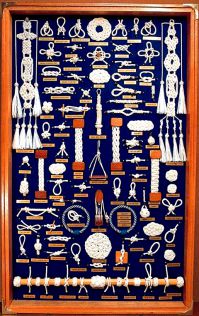
Knot tying
A knot is an intentional complication in cordage which may be useful or decorative. Practical knots may be classified as hitches, bends, splices, or knots. Knots are used in navigation, mountaineering, decoration and other arts. A knot in the strictest sense serves as a stopper or knob at the end of a rope to keep that end from slipping through a grommet or eye.
Technique: From ancient times knots have always been used in very different ways (simple knots, bows, hanging knots, terry knots, scuff knots, etc.) and applications. Basically, knots have a fundamentally practical utility especially in hazardous environments such as mountain, sea, etc. The rope technique distinguishes three main applications for knots: tying some ends together, tying an object to a fix place and mooring, linking two objects together. Strength, security slipping, and capsizing are the main properties of knots.
Materials: ropes, laces and cables made of natural fibres or synthetical materials could be used for knot tying. Noble materials such as linen, cotton, gold and silver cord are also used for decorative tying purposes.
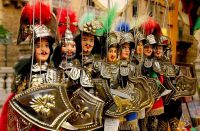
Manufacturing of “Pupi Siciliani” – Sicilian puppets, by Francesco Salamanca
Francesco Salamanca and his wife open the door of their workshop to show how Sicilian puppets are done: the puppets are made of wood and dressed of homemade tailored costumes. Every puppet is the result of a process of woodworking and decorated with painting.
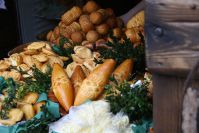
Oscypek - traditional smoked cheese from Podhale
Oscypek is a decorative traditional spindle shaped smoked sheep's cheese from the Podhale region. Two things are needed to create the regional speciality: a special breed of sheep called Polish Mountain Sheep, a shepherd, a small mountain hut with a hearth, a shepherd’s apprentice and a pastureland.
For centuries, the tradition of making oscypek by hand has been passed down from generation to generation. This seasonal cheese is produced from May to September during sheep milking season (sometimes small amounts of milk from a special breed of cow - the Polish Red Cow is added).
The first mentions of the cheese, found in the documentation of a small village called Ochotnica are from the beginning of the 15th century. The first recorded recipe is from 1748.
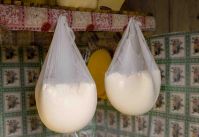
Romanian traditional cheese making - urda
Many sheepfolds in Romania continue to produce cheese in a traditional manner.
The cheese is made in the morning, after the morning milking. Milking is finished by 6.30 AM. The milk is strained to remove any impurities. Traditional cheese making starts off with lighting a fire to warm the evening milk and then to mix it with the morning milk, then is adding three-four spoons of rennet and let the enzymes do the work.
After the curds are separated from the whey, the cheese is transferred onto a cheese drainer (hârzob) before it is hung to drain into a cheese strainer for 2 days. After 2 days, it is placed on a cheese stand, where it rests one more day. It gets a nice yellow color as it dries.
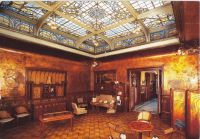
Rooflight of Maison Losseau
'Coloured stained', may indicate tinted, painted or enamelled glasses, or tinted glass with real 'stained' glass. It can be found on windows, doors, ceilings, lunettes, light bulbs, chandeliers and other glass elements of historical buildings. Because of its nature, a stained glass window is a unique and irreplaceable artistic creation and must be treated with respect. The concept of conservation and renovation requires that every effort taken to preserve as many original elements as possible. Moreover it should be taken into account that alterations to the original work are minimal. The aim of restructuring is to restore the object to its original appearance and preserve its longevity. The video shows a craftsman during the renovation of the old skylight at Maison Losseau in Belgium.
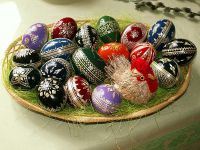
Straw decorated Easter egg
The tradition of decorating eggs at Easter time is still very much alive in Slovakia. The egg was a symbol of nature’s rebirth, renewing life, spring, etc. On Easter Monday, girls would give boys decorated eggs as a reward for being whipped or splashed with water. The traditional decorating techniques are batik, wax decoration, scratching and encasing with wire. They preserve the large variety of traditional ornaments. Easter eggs are one of the most vividly colorful products from current folk art production.
The basis is the colored egg that is decorated with a cut straw. The blew egg could be colored with aniline colors. The egg should be dried well for about two days. The straw should be soaked in warm water for an hour. It could be also colored. The straw is cut into different widths of strips. Longer strips divide the egg. The various shapes are cut from the shorter pieces and stuck to the egg. The glue is applied with a cut-off pin, attached to the pencil either on the finger or directly on the straw. Different patterns are created on the egg in this way.
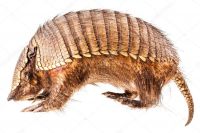
Taxidermy and animals' preservation
Taxidermy is the art and technique of the preserving of an animal's body via mounting (over an armature) or stuffing, for the purpose of display or study. Animals are often portrayed in a lifelike state. Taxidermy means the process of preserving the animal as well as the end product.
Taxidermy is used for preserving mammals, fishes, birds, reptiles as well as insects, aracnids and amphibious. Although traditionally was devoted to preserve hunting trophies, nowadays it serves mainly to natural museums and other training purposes. it is emerging an ethical taxidermy.
Techniques: four main methods are used in taxidermy: traditional skin-mount (the tanned skin of the animal is mounted over a structure that could be this own skeleton), freeze-dried mount (once set the animal in the desired posture, it is frozen dried usign a specific drying camera), reproduction mount (creation of an exact replica of the original animal, mainly used for endangered and protected species), and re-creation mount (exact life-size representations of extant or extint species using materials from other animals).
Materials: bodies of animals, bones, skin, metal and wood, plaster, putty, chemical preservatives, etc.
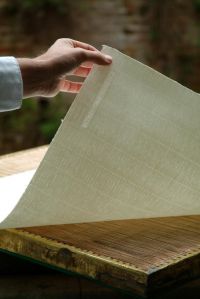
The Handmade Papermaking From Fabriano
Sandro Tiberi from Fabriano shows
the handmade papermaking. Firstly, thepaper is dipped in water and cellulose of
cotton that is necessary to weave the fibers. Then, the paper needs some hours
of rest.
